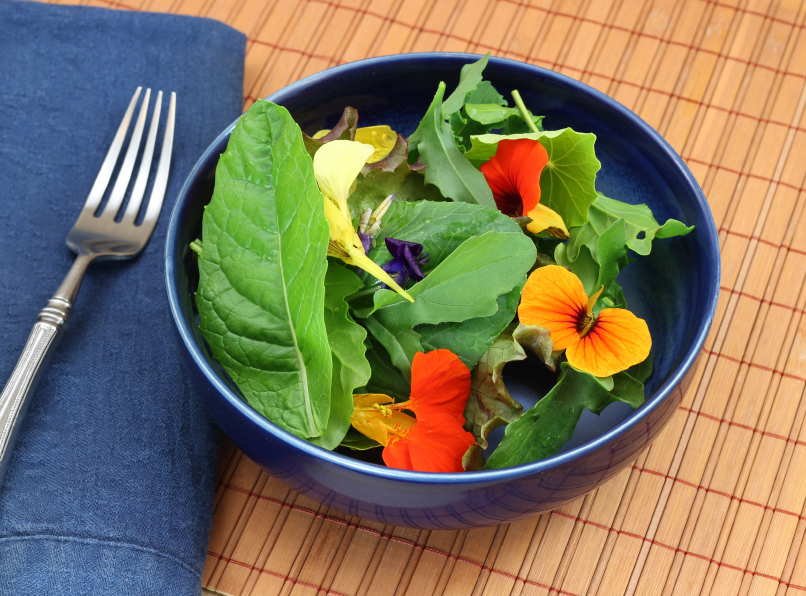April Showers Bring May Flowers To Eat
May 1, 2015
Everyone knows that an artichoke is really a flower that has not yet opened. The next edible flower you might be familiar with is the squash blossom. But do you know there are other kinds of flowers you can cook with? The problem is knowing what is safe to eat and what can be deadly (not to scare you off, but to make you cautious!). The range is surprising – some are spicy and some are more floral.
The use of flowers in recipes dates back to the Chinese, Greek and Romans. Thousands of years ago many cultures used flowers in their traditional cooking. More and more lately, we are seeing petals used in salads, teas or garnishes for both savory and sweet dishes. You can use flowers as a flavoring for homemade ice cream, pasta dough or simple syrups. The possibilities are endless.
I found this list of edible flowers from gardeners.com. Most are best eaten raw, in a salad or as a garnish.
Alliums. Chives, leeks and garlic are all delicious in green salads, potato and pasta salads and dips. Remove the central stem from the flower cluster to release the separate florets.
Nasturtiums. Blossoms have a peppery flavor like watercress. All colors and varieties are tasty in salads or as garnishes. Leaves can be eaten, too.
Marigolds. Use the tiny flowers of signet marigolds, such as Lemon Gem and Tangerine Gem. Their blossoms have a citrus taste.
Pansies and Johnny jump-ups. These flowers have a wintergreen flavor and are pretty on cakes and other desserts. Glaze with warmed jelly for a jeweled look.
Calendula. An easy and prolific edible flower that’s easy to grow from seed right in the garden. Separate the petals from the center of the flower and sprinkle the petals into salads. Colors range from pure yellow to orange and red. Remove spent flowers and the plants will bloom continuously from early summer into late fall.
Anise hyssop. If you like anise, this is the edible flower for you. Separate the florets and add them to sweet or savory dishes. Or use the full flowers to garnish a cheese plate.
Honeysuckle. The blossoms make a pretty addition to salads. Don’t use the berries; they’re poisonous.
Scarlet runner beans. Mix these bright-red flowers into salads, or in with steamed veggies.
Borage. This fuzzy-leaved herb has sky-blue flowers with a light cucumber taste. Add to fruit salads, green salads or freeze in ice cubes for cold drinks.
Bee balm. This member of the mint family has minty-tasting flowers. Colors range from bright red to purple and pink.
Chamomile. English chamomile has small, daisy-like flowers with an apple-like flavor. If you’re allergic to ragweed, you might want to avoid chamomile.
Daylily. Daylily buds and flowers taste a bit like asparagus. They can be used as a garnish, or can be stuffed or made into fritters. Good in stir-frys, too.
Mint. Like bee balm, all flowers of the mint family are edible and have a pleasant taste. Try lemon balm or spearmint in iced tea.
Squash blossoms. Use these as you would daylilies (see above).
The honeysuckle right outside my window is covered with blossoms. I plan on picking some tonight and adding them to my salad! And the next time you are out admiring the pretty flowers, just remember, you could be eating them too!



